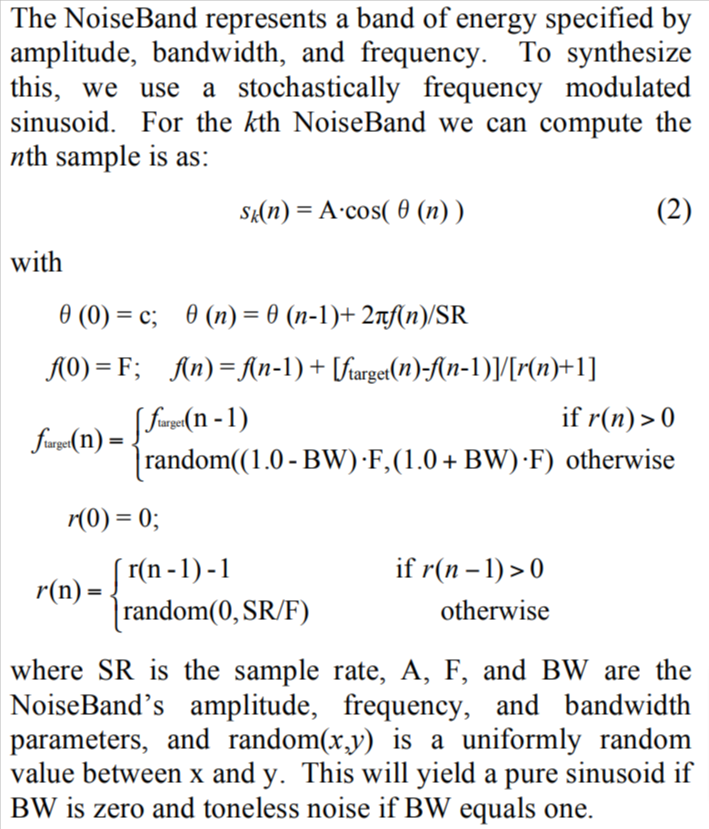23
Feb 21
22:30
Noise bands from interpolating instantaneous frequency
Frequency bands are often used in analysis or input representation, for example, in mel spectogram, there are a number of bands of differing frequency widths used to represent the signal. In synthesis, frequency bands are also used. However, synthesizing a frequency band of non zero width is usually a noisy process. The most common way to synthesize this is by generating wide band noise, either with a white noise generator or an impulse, and filtering it to have fewer frequencies. For example, with a band pass filter or high-Q IIR filter. When narrow enough these will resemble sinusoids with some attractive roughness. FM can be used to create narrow bands as well, and be made more complex with a daisy-chained FM. In the music page, the piece “December 9” uses daisy chained FM and granular synthesis exclusively to create tones and rain-like sounds. Each of these has some drawbacks and advantages depending on your use case – IIR might explode, daisy-chained FM is unstable in other ways. They are all pretty neat – somehow it’s enjoyable to turn noise into something that resembles a sinusoid.
I want to describe another technique to create banded noise which I’ve used before that does the inverse, turning a sinusoid into noise. I’m fairly sure others have used this as well, but it doesn’t seem to be well documented. The basic idea is to start with a sinusoidal unit generator and linearly interpolate the instantaneous frequency from the previous target frequency to a random target frequency, with the target updating at an average but random duration that is inversely proportional to the width. The phase advances monotonically each step. The result is a band of noise that is a perfect sinusoidal tone at zero width, and white noise at full width.
This technique was described in my first academic paper at ICMC 2007 as follows:

It might be interesting to create some DDSP modules that implement this for DNN context.
